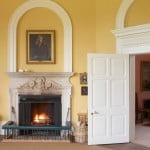
The story sounds more like the plot of a riveting suspense movie than real life: Does the tomb of Tutankhamen in the Valley of the Kings in Egypt have hidden rooms with the never-found tomb of the powerful Queen Nefertiti?
If you ask the renowned British Egyptologist Nicholas Reeves, 59, the answer is most certainly yes. Dr. Reeves, best known for his excavations in the Valley of the Kings in Luxor over the last few decades, arrived at his theory after analyzing surface scans of King Tut’s tomb. “The pictures showed vertical lines which look like doorways, and they’re oriented toward the right — characteristic of a queen’s tomb,” he said.
A radar survey late last year suggesting that hollow chambers lie behind the tomb’s walls was more evidence for his suspicions, and now Dr. Reeves is in the midst of a search to get to the bottom of what is one of the biggest modern-day archaeological mysteries.
His work in Egypt has made headlines and is giving the country much-needed attention for its historical riches, which now attract far fewer tourists than they did before the Egyptian revolution in 2011.
Dr. Reeves, however, who has made more than 50 trips to Egypt since he first visited in the early 1970s and currently travels there frequently from his home outside London, says that there is no better time to go.
He visited New York City recently to give a talk at the “Discovery of King Tut” exhibition. Following are edited excerpts from a conversation with him.
Q. How is Egypt different since the revolution, and how does the change benefit travelers who are considering a trip there?
A. The country and the tourist sites look exactly the same, but the big attractions used to be jammed with people. Now, they are visibly less crowded, and for anyone interested in Egyptian history, this is the time to plan a trip because you’re not going to get jostled by others the way you would have pre-revolution. And, it’s also a more affordable destination because prices have dropped.
If you had to create an itinerary to see the best of the country, what would it be?
Take at least a week. Start in Cairo and spend a few days seeing the city and visiting the museums. The Museum of Egyptian Antiquities is a treasure chest, but don’t overlook the smaller museums like the Museum of Islamic Art; the Coptic Museum, which is full of Egyptian Christian artifacts; and the Agricultural Museum, where you can learn about Egyptian agriculture.

Also, the city of Aswan is worthwhile. It’s on the Nile and beautiful, and there is lots to see like the Aswan Dam and the Nubian Museum, dedicated to Nubian culture.
The temples are also a must. There’s Kom Ombo, also on the Nile and north of Aswan, and Dendera, which is north of Luxor.
And then there’s Luxor itself. Given the amount of time I have spent there, I may be biased, but it is the heart of the Egyptian New Kingdom and home to at least a hundred different archaeological sites including beautiful tombs of nobles, queens and kings like Tutankhamen’s.
Luxor’s Valley of the Kings and Valley of the Queens, where most of these tombs are, are what many people associate the city with. What else is there to see?
Howard Carter’s house. He is, of course, the English archaeologist famous for discovering Tutankhamen’s tomb in 1922. He lived in this house during the search, and now it’s a small museum. He was an elusive guy, and little is known about him. Visiting his house doesn’t necessarily shed any more light on what he was like, but it gets you a bit closer to him. Next to his house, there’s an excellent replica of Tutankhamen’s tomb.
Also, the Sofitel Winter Palace Hotel, where Carter announced his discovery at a news conference, should be visited even if you’re not staying there because it’s so full of history.
The worldwide fascination with King Tut seems to be — or at least has been in the past — a driver of tourism to Egypt. Why is that?
His is a marvelous story with so much intrigue. You have a boy who’s just 9 or 10 when he becomes the king of Egypt and essentially the most powerful human being in the world. Then he disappears when he’s an adolescent, and no one really knows how he died.
But Carter’s search for and discovery of his intact tomb is as thrilling as the story of the king himself, especially the element of the Pharaoh’s Curse, which says that anyone who disturbs the mummy of a pharaoh is afflicted with bad luck, which was the case with some members of Carter’s team.
Both are engrossing plots, and when people hear about them, it sparks their interest in visiting Egypt.
Many tourists to Egypt hire guides to show them the country. Is a guide necessary?
Yes, because Egypt’s history is overwhelming. A good guide will give you a synopsis of the highlights, help you navigate your way around and take you to places that you don’t read about in the guidebooks.
[SOURCE :-nytimes]



